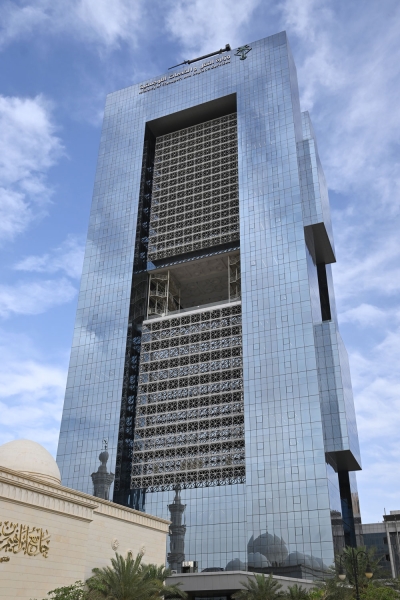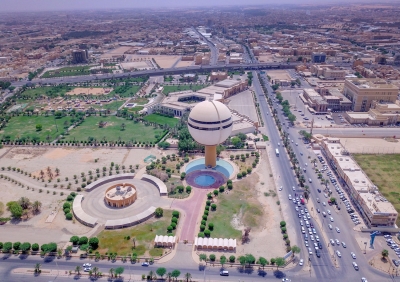

The National Transport and Logistics Strategy is an organizational structure and plans, designed to enhance transport and logistic services in the Kingdom of Saudi Arabia, aiming to establish the nation as a global logistics hub connecting three continents. The strategy was launched in 2021 by Crown Prince, Prime Minister, Chairman of the Council of Economic and Development Affairs, and Chairman of the Supreme Committee for Transport and Logistics, His Royal Highness Prince Mohammed Bin Salman Bin Abdulaziz Al Saud.
Recognizing the interconnectedness of transport and logistics, this strategy consolidates both functions under a single executive body. Logistic services, integral to supply chains, encompass the movement, storage, and flow of goods, services, and information throughout comprehensive supply chains. In 2021, the Council of Ministers approved the amendment of the Ministry of Transport's name to become the Ministry of Transport and Logistic Services. The consolidation of these two sectors into an executive body is in line with the goals and aspirations of Saudi Vision 2030.
Objectives of the National Transport and Logistics Strategy
The National Transport and Logistics Strategy marks a significant shift in harnessing the Kingdom's capabilities and its strategic position as a hub connecting international trade routes across three continents. This strategy aims to enhance all modes of transport - air, land, maritime, and rail- and provides a comprehensive roadmap for the future development of the transport and logistics sectors in the Kingdom.
It emphasizes the development and investment in the transport and logistics system to boost the sector, focusing on building a contemporary infrastructure that facilitates mobility both within the Kingdom and globally. The strategy outlines four main national goals: solidifying the Kingdom’s status as a global logistics hub, enhancing the quality of life in Saudi cities, contributing to a balanced national budget, and improving government performance.
Additionally, the National Transport and Logistics Strategy aims to achieve several objectives that bolster economic growth and development. This includes raising the transport and logistics sector's contribution to the national gross domestic product (GDP) to 10 percent and increasing the sector's annual non-oil revenues to approximately SAR45 billion by 2030.
The strategy includes a package of enabling megaprojects to achieve economic and social targets and adopting effective governance models to enhance institutional work in the transport system, in line with the change in the ministry's name from the Ministry of Transport to the Ministry of Transport and Logistic Services.
Significance of Saudi Arabia's geographical location
The Kingdom boasts numerous geographical and commercial advantages that allow it to effectively invest its resources in the global economy. As a result, the Kingdom is striving to become a leading logistics hub in the region, leveraging its significant economic weight and strategic location, which is ideally suited for distribution across the Arabian Peninsula, the Levant, and East Africa. It sits directly along the trade route that connects Asia and Europe, handling 12 percent of annual container trade.
To support its transformation into a logistics hub, the Kingdom has initiated a program encompassing nine initiatives, including: streamlining import and export processes, implementing electronic systems, developing a comprehensive master plan for transport infrastructure, enhancing air cargo capacity, improving logistics sector organization, reforming port operations, upgrading the railway system, liberalizing air freight ground services, and establishing special economic zones.
Air transport in Saudi Arabia
The National Transport and Logistics Strategy supports the Kingdom's efforts to enhance its transport system across all modes, aligning with its ambitious vision. This includes developing air transport to elevate the Kingdom to fifth place globally in air traffic, expanding to over 250 international destinations, and launching a new national carrier. The strategy also aims to strengthen the air cargo sector by doubling its capacity to over 4.5 million t.
Additionally, the strategy aligns with the Civil Aviation Sector Strategy to position the Kingdom among the top fifteen nations in the air connectivity index. It also supports the Hajj and Umrah sector’s strategy target of accommodating 30 million Umrah performers and the tourism sector’s goal of attracting one hundred million tourists. Furthermore, it seeks to improve the cost structure for sector operators, enhancing ticket price competitiveness and increasing the capacity of the Kingdom's airports to over 330 million passengers annually.
Over the past few decades, the Kingdom's air transport infrastructure has seen significant advancements. Currently, there are twenty-nine airports, including three that have received global recognition according to the Skytrax World Report 2020. Additionally, four airports in the Kingdom have been ranked among the top ten most improved airports worldwide, according to the same report.
Maritime transport in Saudi Arabia
The National Transport and Logistics Strategy aims to improve the Kingdom’s maritime transport capabilities by targeting an annual capacity of over forty million containers. This will involve significant investments in port infrastructure, enhancing its integration with the Kingdom’s logistics zones, and expanding connections to international shipping routes.
Rail sector in Saudi Arabia
The National Transport and Logistics Strategy encompasses the railway sector, which offers passenger and freight services across a 5,330 km network, including 450 km of the Haramain High-Speed Railway connecting Makkah al-Mukarramah and al-Madinah al-Munawwarah, the largest high-speed transport project in the region. The strategy aims to expand future railway lengths by approximately 8,080 km, featuring projects like the 'Landbridge,' which will span over 1,300 km and accommodate more than three million passengers while transporting over fifty million t annually. This initiative seeks to connect the Kingdom's ports on the Arabian Gulf coast with those on the Red Sea coast.
Additionally, the strategy intends to enhance the operations of Saudi Arabia Railways (SAR) by establishing and operating an efficient and safe railway infrastructure, targeting the transport of sixty-five million passengers and the shipment of thirty-six million t by 2025, along with increasing the number of stations and lines to serve new areas.
Land Transport in Saudi Arabia
In terms of land and road transport, the Kingdom has established the world’s largest connected road network, spanning over 75,000 km. Efforts are ongoing to enhance road quality and safety, positioning the country among the most advanced internationally. The National Transport and Logistics Strategy outlines several initiatives aimed at minimizing accident casualties, improving connectivity, and developing public transport in Saudi cities. Goals include reducing fuel consumption by 25 percent and implementing smart solutions to streamline passenger travel between cities and goods transport, utilizing the latest global technologies.
Traffic safety in Saudi Arabia
The National Transport and Logistics Strategy prioritizes traffic safety and the protection of transport users' lives. In recent years, there has been a decline in accidents by 56 percent, fatalities by 51 percent, and injuries by 30 percent, leading to numerous societal benefits. The strategy aims to further reduce road accident rates by over 50 percent.
Transport apps in Saudi Arabia
The Kingdom has embraced technological advancements in transport services by implementing online service request apps, such as Uber and Careem, which connect smartphone users to taxi drivers and serve as vital transport options for women.
The investment initiative in Uber exemplifies the Kingdom's commitment to international investments in global companies. The Public Investment Fund has invested USD3.5 billion for a 5 percent stake in Uber Technologies, and now holds a seat on Uber's Board of Directors. As a global leader in the transport and technology sectors, Uber is a pioneer in the sharing economy, showing remarkable growth and the potential for further transformation in transport.
The National Transport and Logistics Strategy is expected to achieve diverse goals across various transport-related sectors by incorporating the latest technologies. This seeks to enhance the efficiency and integration of transport systems, reduce energy consumption by 25 percent, and increase the share of public transport in urban trips to 15 percent.
The future of transport in Saudi Arabia
To advance the transport sector in the Kingdom and align it with cutting-edge technology, the Ministry of Transport and Logistic Services has launched an initiative to monitor and catalog emerging global transport technologies. This initiative aims to foster the adoption of innovative transport and logistics solutions in the Kingdom, ensuring a sustainable future vision that embraces technical innovations and artificial intelligence through a dedicated unit.
The ministry is focused on achieving several goals aligned with the future of transport and technological development. These include collaborating with research centers and educational institutions, tracking new advancements in transport and logistics, partnering with the private sector, supporting international agreements, establishing a comprehensive big data repository, leading in innovation and creativity through knowledge and data sharing, and conducting feasibility studies for future transport technologies.
The National Transport Strategy in Saudi Arabia
The National Transport and Logistics Strategy builds upon the earlier National Transport Strategy created by the Ministry of Transport, which received the Council of Ministers' approval in 2012. This strategy outlines key policies that serve as guiding principles across all program areas. It emphasizes shared responsibility to adapt to the evolving transport sector, promotes decentralization and private sector involvement, fosters regional and international integration, and supports the comprehensive development and operation of transport infrastructure.
Related quizzes
Related articles

